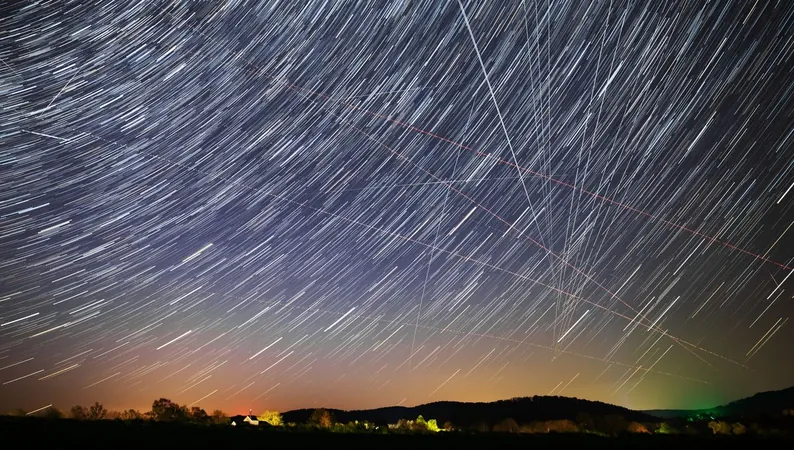
How Vantablack – The World’s Darkest Paint – Could Revolutionize Astronomy
2025-06-13
Author: Ming
With over 8,000 satellites zipping through low Earth orbit—most notably SpaceX's Starlink megaconstellation—the night sky is becoming increasingly cluttered. These shiny interlopers not only alter the stunning celestial view but also brighten the night, threatening the very essence of astronomical observation.
Enter Vantablack, a remarkable paint recognized as one of the darkest materials on Earth. Capable of absorbing nearly all visible light—up to 99.965%—Vantablack’s applications have spanned both technology and the arts since its creation in 2014 by Surrey NanoSystems. Now, researchers from the University of Surrey are teaming up with Surrey NanoSystems to test Vantablack 310, which absorbs about 98% of light, in the harsh conditions of outer space.
JUPITER Mission Launching Excitement!
Next year, the Joint Universities Programme for In-Orbit Training, Education and Research (JUPITER) will launch a trailblazing mission called Jovian 1. This compact CubeSat will feature one side coated in Vantablack 310, aiming to evaluate the paint’s effectiveness as a hull darkening solution.
Astha Chaturvedi, a postgraduate researcher at the University of Surrey, emphasizes the urgency of addressing the brightness issues caused by these satellite megaconstellations. Studies suggest that they could increase sky brightness by a staggering 1% in the worst-hit areas, jeopardizing essential astronomical observations and the preservation of our dark skies.
Combining Forces for the Future of Astronomy
"Our project directly tackles that challenge by exploring innovative ways to reduce satellite reflectance," Chaturvedi states. This endeavor merges the expertise of astrophysics, space engineering, and nanotechnology from Surrey, in collaboration with Surrey NanoSystems—a spin-off of the University’s Advanced Technology Institute.
Astronomers have been raising alarms over the unregulated increase of megaconstellations, and last year, the International Astronomical Union even passed a resolution to safeguard the tranquil and dark sky. If Vantablack lives up to its potential, it might just provide the crucial solution the field of astronomy desperately needs.
The Sky’s the Limit!
With projections indicating that the number of satellites could more than quadruple by 2030, finding a way to mitigate their impact on our view of the cosmos is not just beneficial—it’s essential. The clock is ticking, and initiatives like the JUPITER mission might hold the key to preserving our night sky for generations to come.

 Brasil (PT)
Brasil (PT)
 Canada (EN)
Canada (EN)
 Chile (ES)
Chile (ES)
 Česko (CS)
Česko (CS)
 대한민국 (KO)
대한민국 (KO)
 España (ES)
España (ES)
 France (FR)
France (FR)
 Hong Kong (EN)
Hong Kong (EN)
 Italia (IT)
Italia (IT)
 日本 (JA)
日本 (JA)
 Magyarország (HU)
Magyarország (HU)
 Norge (NO)
Norge (NO)
 Polska (PL)
Polska (PL)
 Schweiz (DE)
Schweiz (DE)
 Singapore (EN)
Singapore (EN)
 Sverige (SV)
Sverige (SV)
 Suomi (FI)
Suomi (FI)
 Türkiye (TR)
Türkiye (TR)
 الإمارات العربية المتحدة (AR)
الإمارات العربية المتحدة (AR)